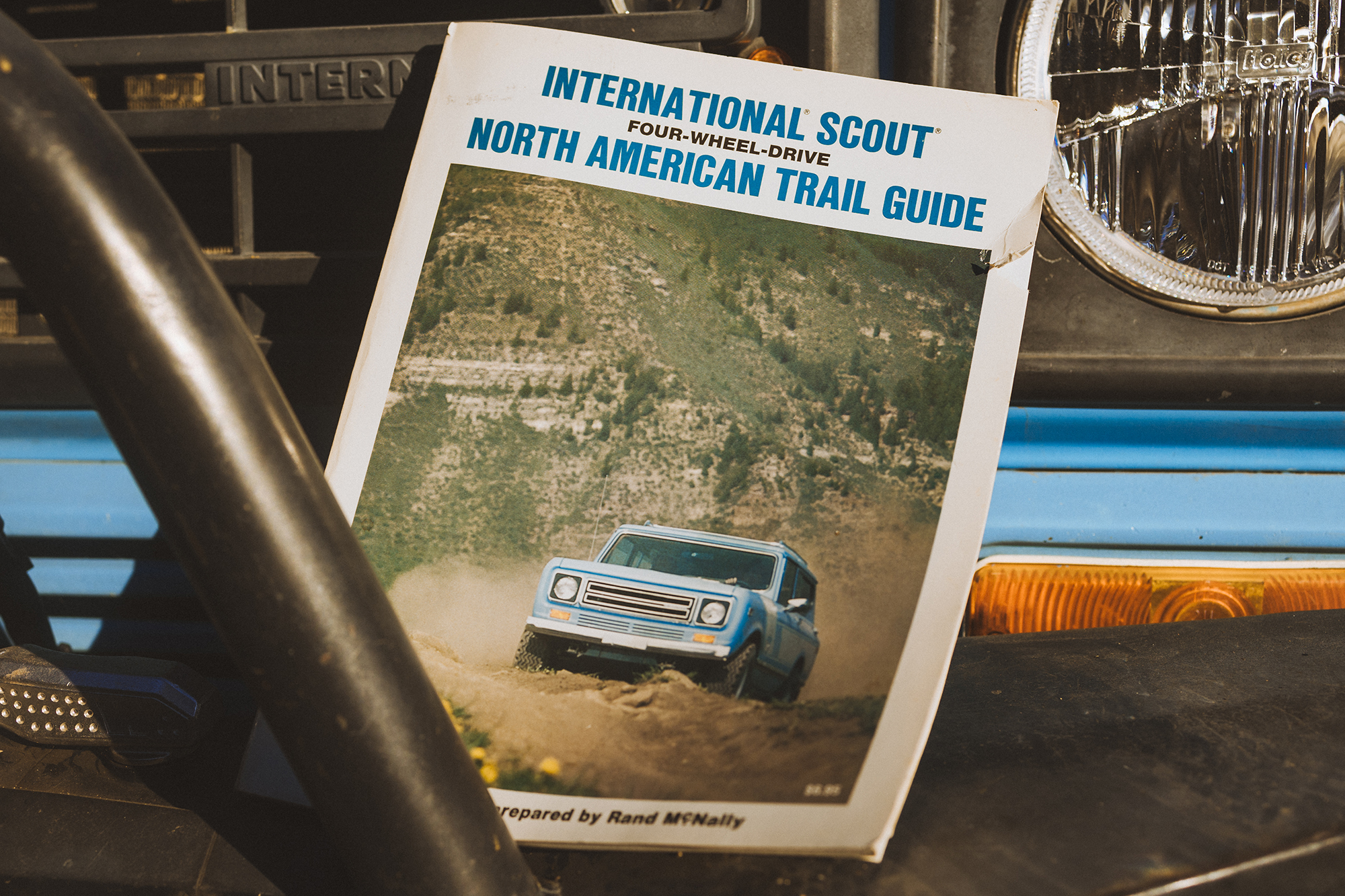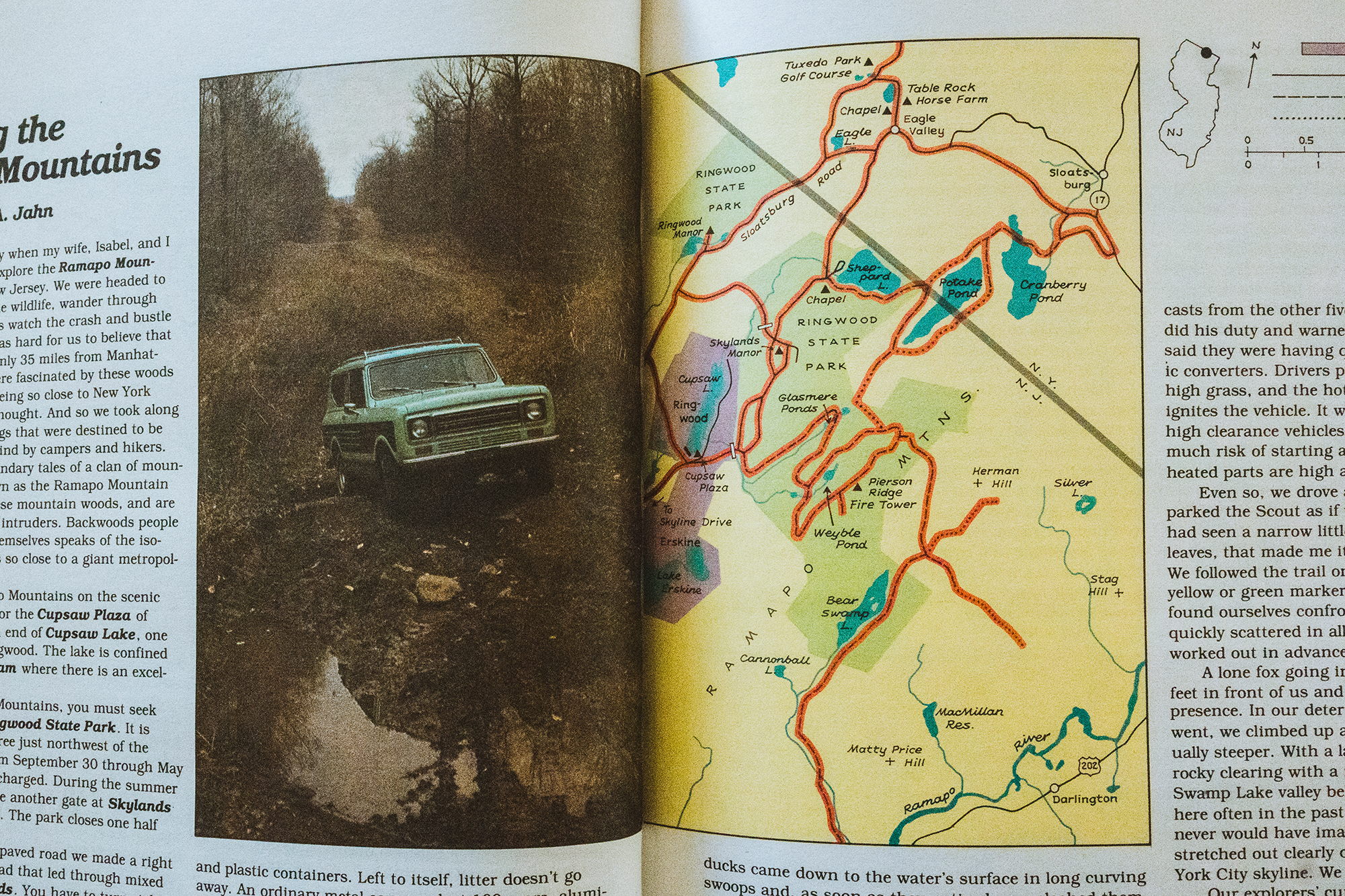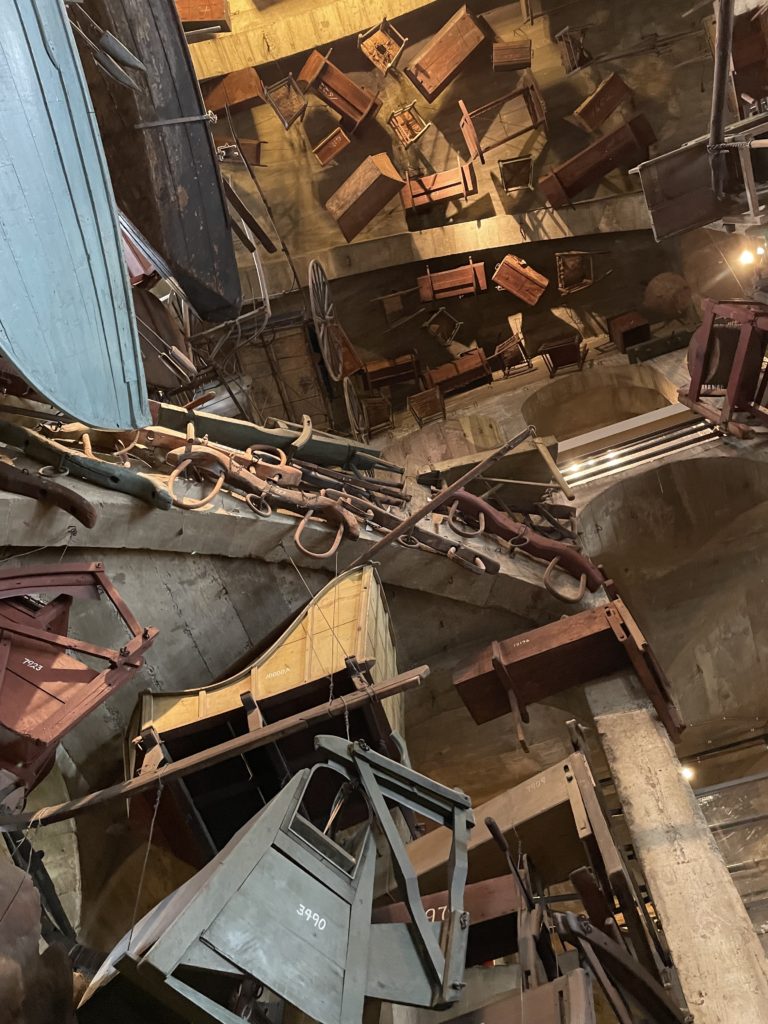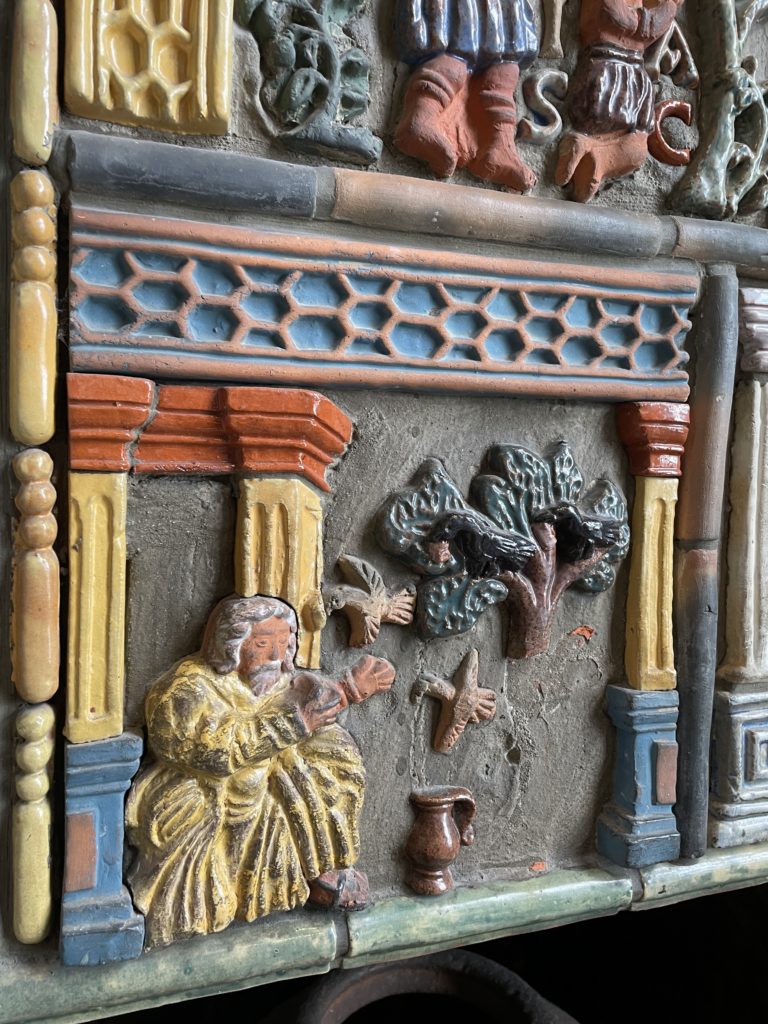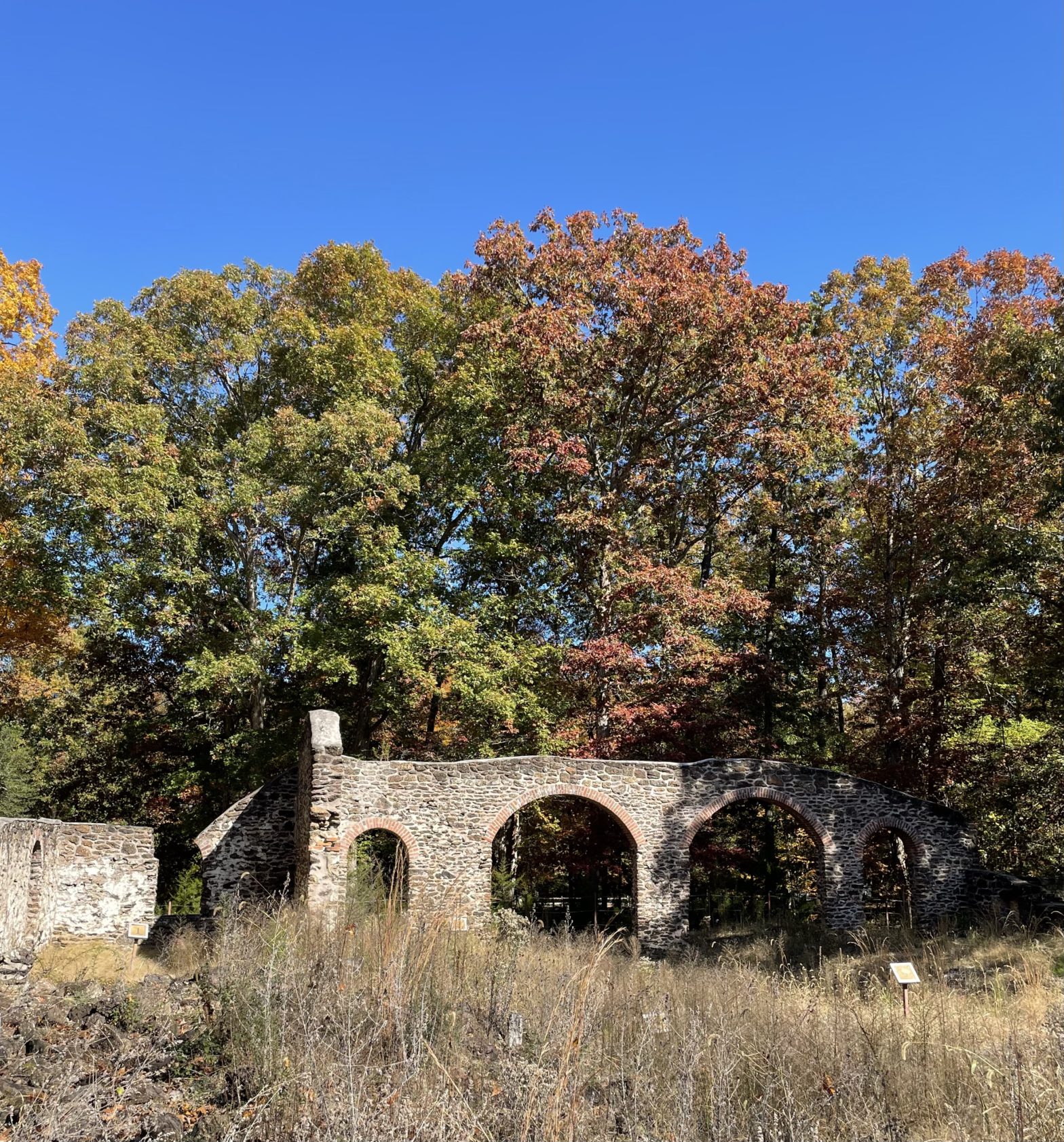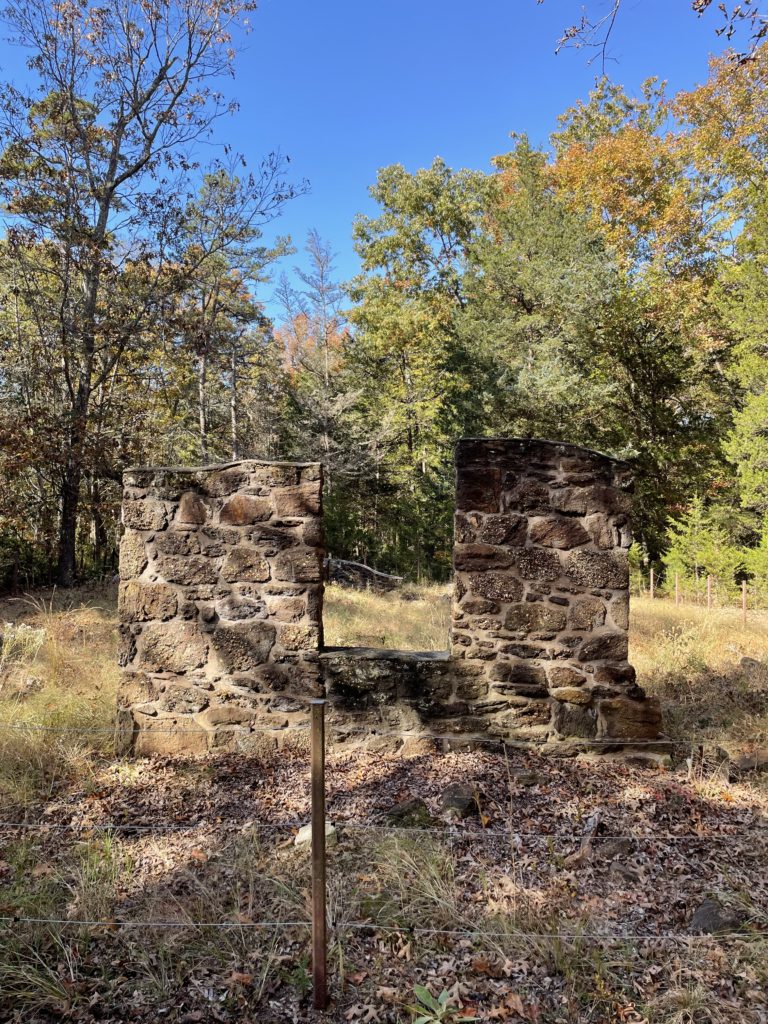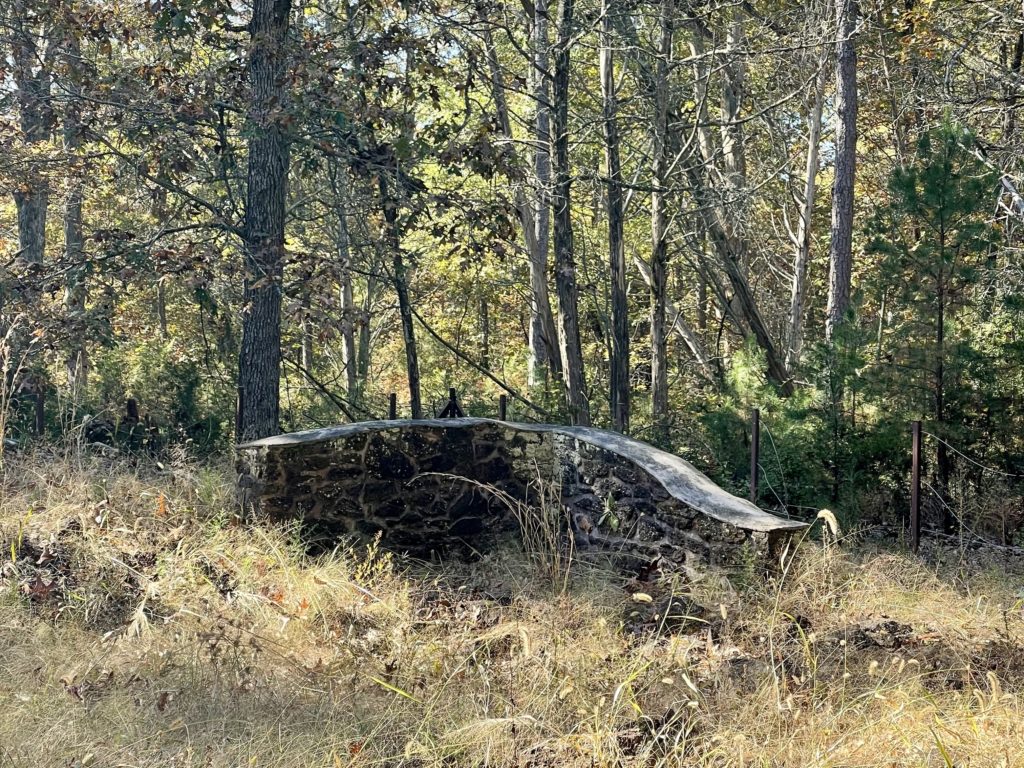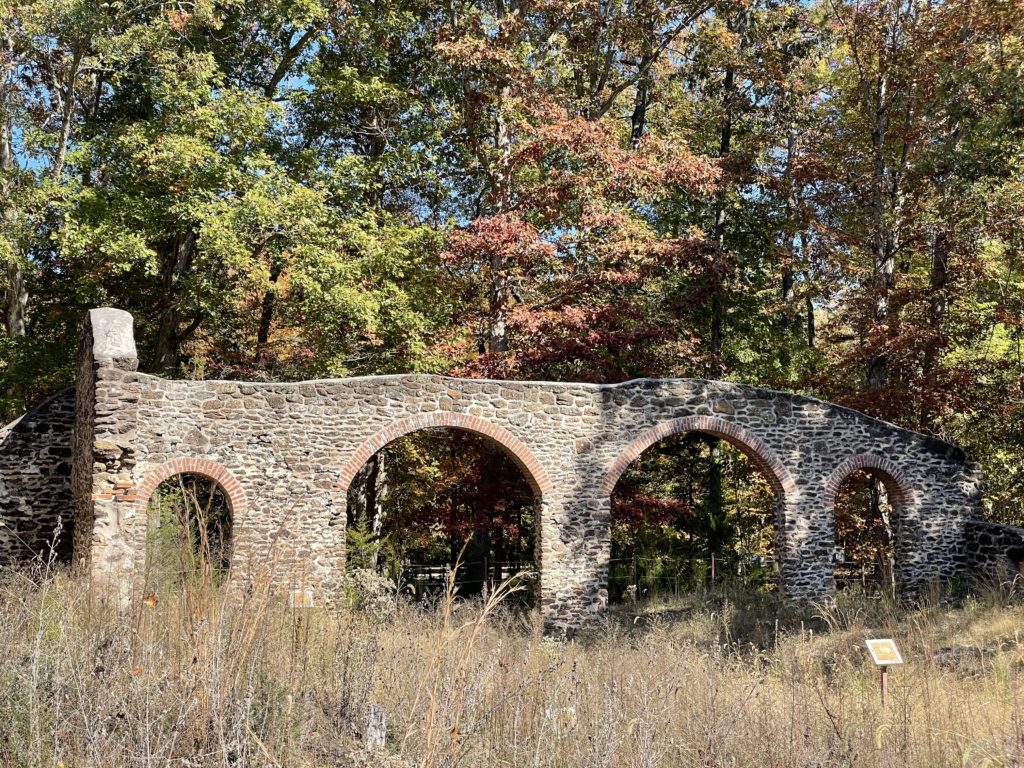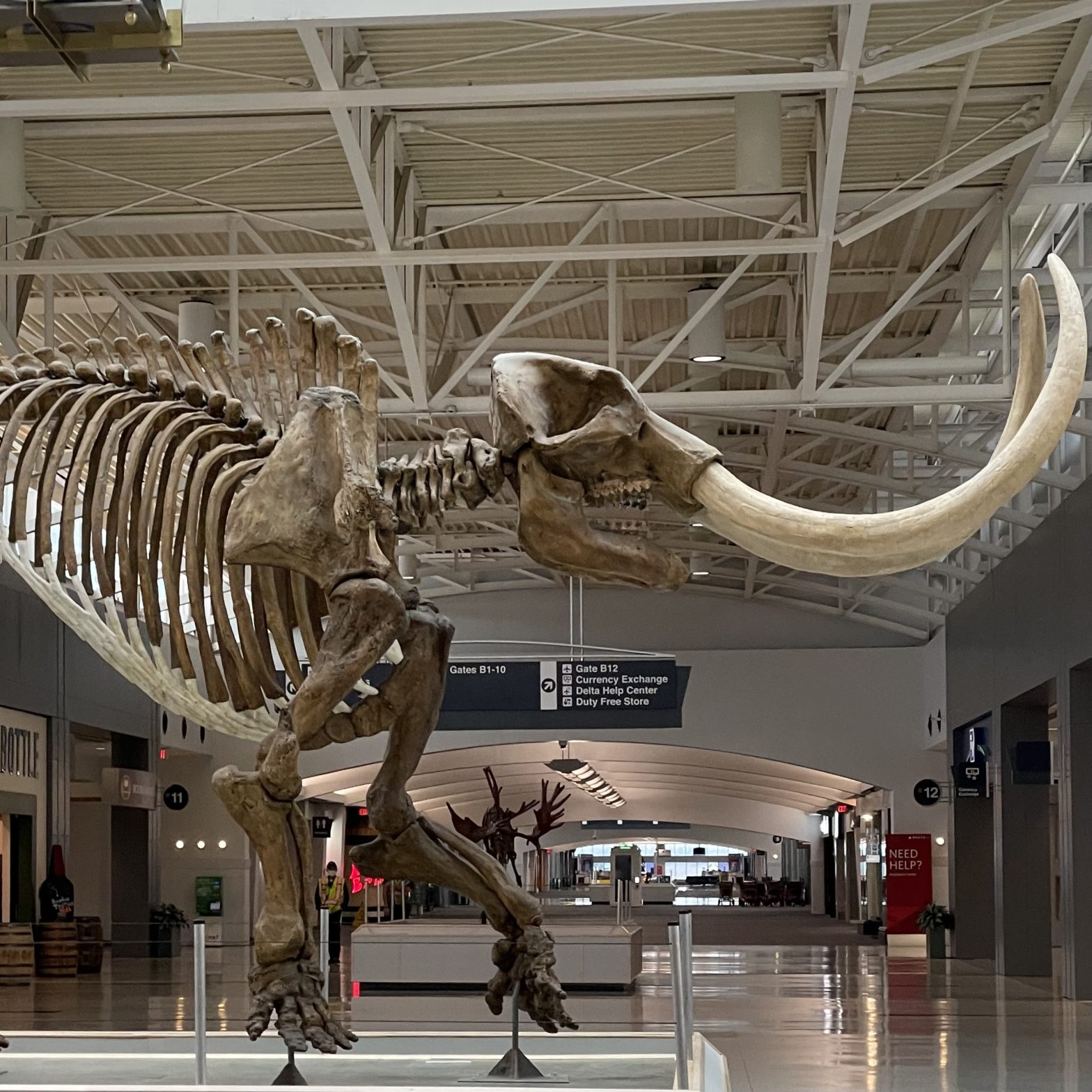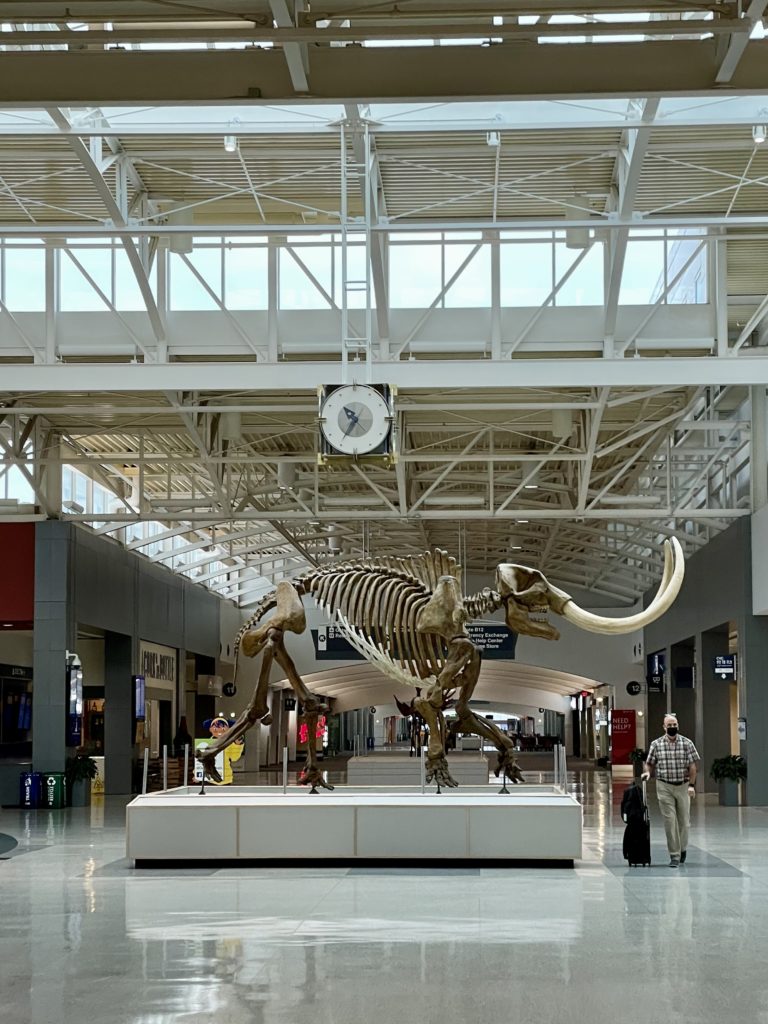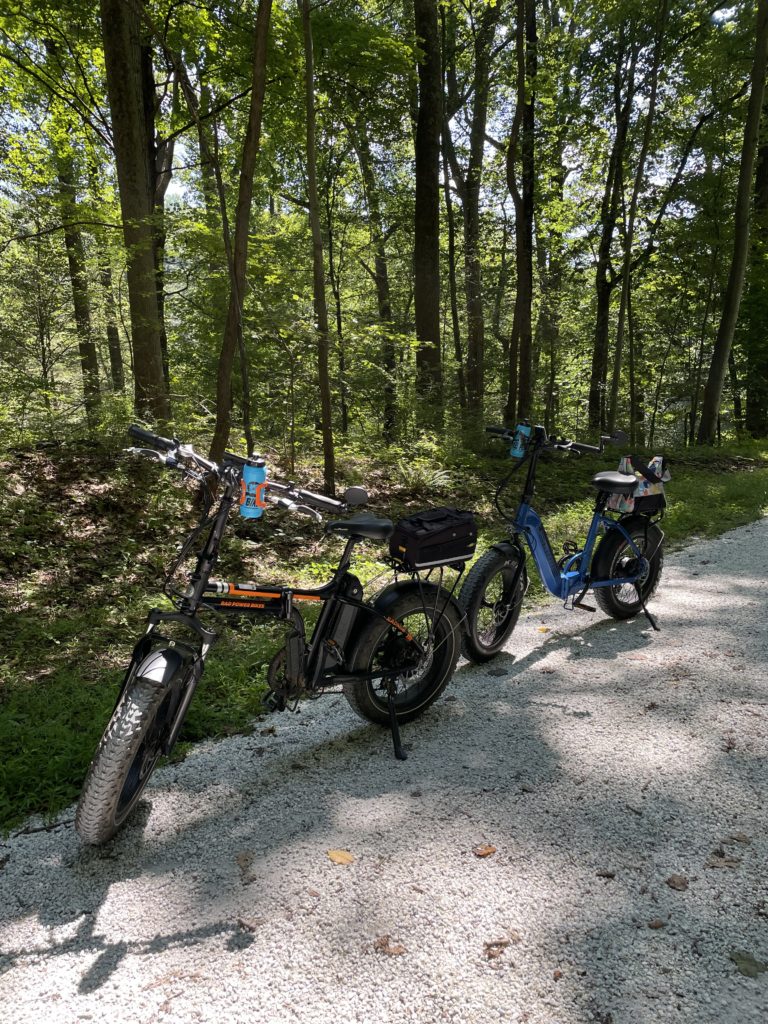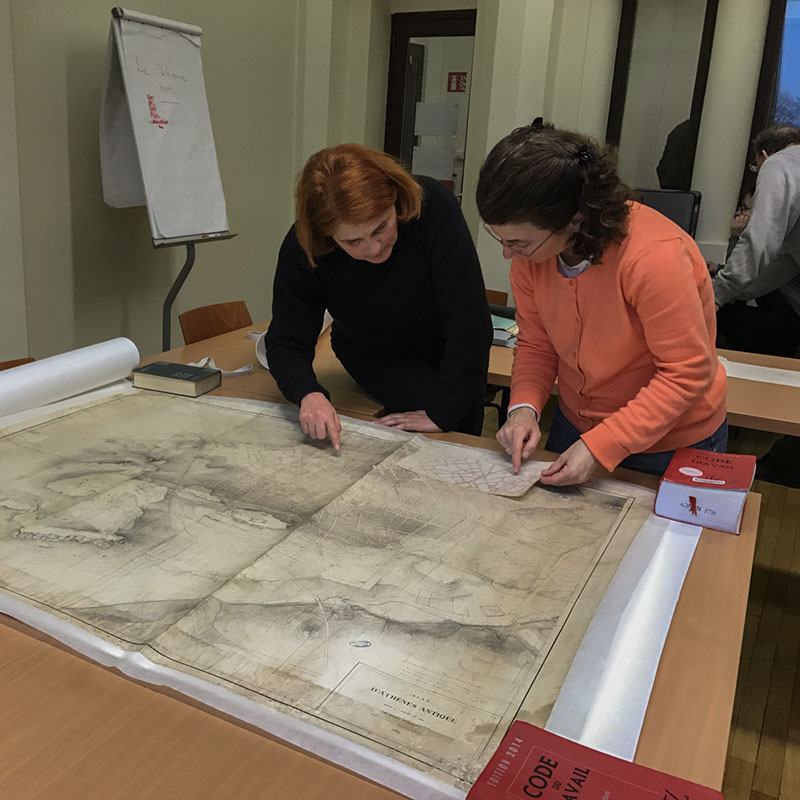Volkswagen obtained the trademark to the International Scout name a few years ago and, on October 24, the new Scout Motors will officially reveal an all-electric Scout vehicle. In the meantime, they have been leaning into International Harvester Scout history on their website.
Witness their recent post on the 1979 International Scout Four-Wheel-Drive Trail Guide, a thick (224 pages!) combination atlas and collection of essays on 4×4 trails across America, including, based on the photo below, at least one in New Jersey that may no longer be off-road.
